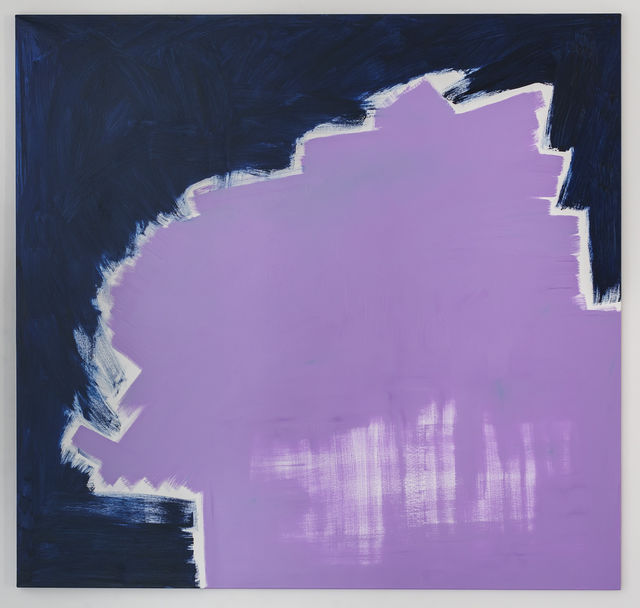
Stigter van Doesburg announces the double exhibition The missing shade of blue with Wouter Paijmans and Robin Waart. The title of the show is refers to a work of Waart’s, a floor piece consisting of 36 copies of the novel ‘Die neuen Leiden des Jungen W.’ For this work he collected only the blue copies of the montage novel written by Ulrich Plenzdorf, as they were published from 1976-ca. 2001. They are laid out in a grid, showing how consecutive reprints came out a different shade of blue, a paraphrase of Hume’s famous example, almost by coincidence. Can you imagine a shade of blue, while you have never experienced that particular one?
The works of Wouter Paijmans are based on what he sees around him, mostly elements present in his studio or any painter’s studio: ladders, scaffolding, stools, empty canvases. He starts with charcoal sketches of these kinds of objects, and later folds them carefully out of aluminum into huge sculptures or installations. He then sometimes flattens them again, paints them and hangs them on the wall. In the end they appear as somewhere in between painting and object. His work plays with this tension between installation and painting, between artist studio and artwork. The central piece in the gallery ‘Support surface’ (2016) looks at first instance as if it still has be moved to storage. Only at second glance one sees that it’s actually a sort of constructed ready made of all the aids you don’t want to have in sight. With this multilayered approach, Paijmans reflects on artistic creation as such. Even some of his titles are referring to his painterly practice only. One of his paintings is called: ‘Oil on varnish, varnish on oil’ (2016). As if that says it all.
Work by Robin Waart was shown in the gallery’s backspace in 2013. Over the past few years Waart has made work using repetition as a framework, through self-consciously repetitive moves, compilations, accumulations of everyday materials: books, film stills, polaroids, book pages. They raise questions about (dis)continuity, what it means to look at, or do, the same thing over and over – from the often unacceptably spontaneous onset or insight to its lodging into a new system. In this way they also propose a reinterpretation and restaging of something given.